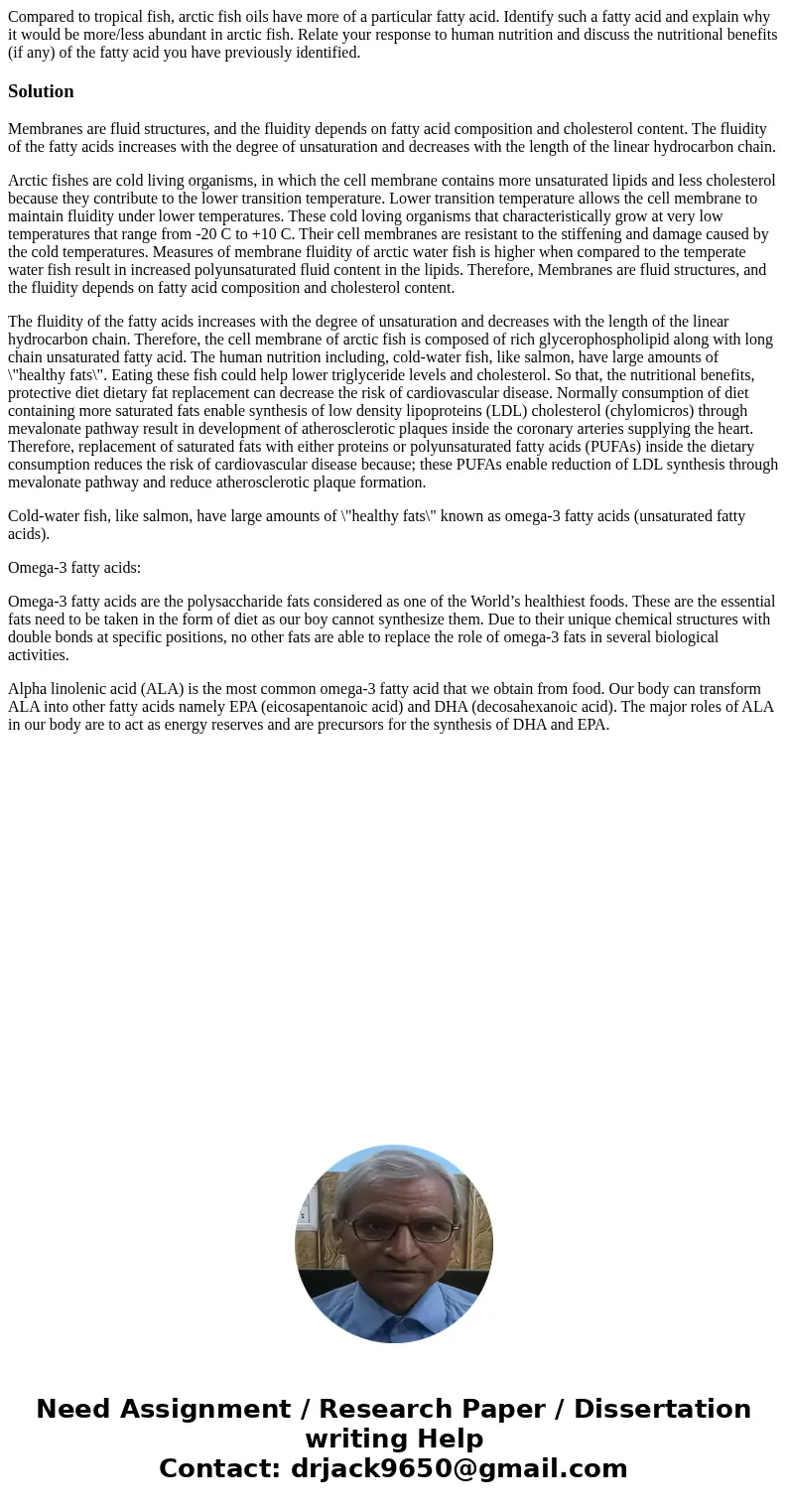Compared to tropical fish arctic fish oils have more of a pa
Compared to tropical fish, arctic fish oils have more of a particular fatty acid. Identify such a fatty acid and explain why it would be more/less abundant in arctic fish. Relate your response to human nutrition and discuss the nutritional benefits (if any) of the fatty acid you have previously identified.
Solution
Membranes are fluid structures, and the fluidity depends on fatty acid composition and cholesterol content. The fluidity of the fatty acids increases with the degree of unsaturation and decreases with the length of the linear hydrocarbon chain.
Arctic fishes are cold living organisms, in which the cell membrane contains more unsaturated lipids and less cholesterol because they contribute to the lower transition temperature. Lower transition temperature allows the cell membrane to maintain fluidity under lower temperatures. These cold loving organisms that characteristically grow at very low temperatures that range from -20 C to +10 C. Their cell membranes are resistant to the stiffening and damage caused by the cold temperatures. Measures of membrane fluidity of arctic water fish is higher when compared to the temperate water fish result in increased polyunsaturated fluid content in the lipids. Therefore, Membranes are fluid structures, and the fluidity depends on fatty acid composition and cholesterol content.
The fluidity of the fatty acids increases with the degree of unsaturation and decreases with the length of the linear hydrocarbon chain. Therefore, the cell membrane of arctic fish is composed of rich glycerophospholipid along with long chain unsaturated fatty acid. The human nutrition including, cold-water fish, like salmon, have large amounts of \"healthy fats\". Eating these fish could help lower triglyceride levels and cholesterol. So that, the nutritional benefits, protective diet dietary fat replacement can decrease the risk of cardiovascular disease. Normally consumption of diet containing more saturated fats enable synthesis of low density lipoproteins (LDL) cholesterol (chylomicros) through mevalonate pathway result in development of atherosclerotic plaques inside the coronary arteries supplying the heart. Therefore, replacement of saturated fats with either proteins or polyunsaturated fatty acids (PUFAs) inside the dietary consumption reduces the risk of cardiovascular disease because; these PUFAs enable reduction of LDL synthesis through mevalonate pathway and reduce atherosclerotic plaque formation.
Cold-water fish, like salmon, have large amounts of \"healthy fats\" known as omega-3 fatty acids (unsaturated fatty acids).
Omega-3 fatty acids:
Omega-3 fatty acids are the polysaccharide fats considered as one of the World’s healthiest foods. These are the essential fats need to be taken in the form of diet as our boy cannot synthesize them. Due to their unique chemical structures with double bonds at specific positions, no other fats are able to replace the role of omega-3 fats in several biological activities.
Alpha linolenic acid (ALA) is the most common omega-3 fatty acid that we obtain from food. Our body can transform ALA into other fatty acids namely EPA (eicosapentanoic acid) and DHA (decosahexanoic acid). The major roles of ALA in our body are to act as energy reserves and are precursors for the synthesis of DHA and EPA.

 Homework Sourse
Homework Sourse